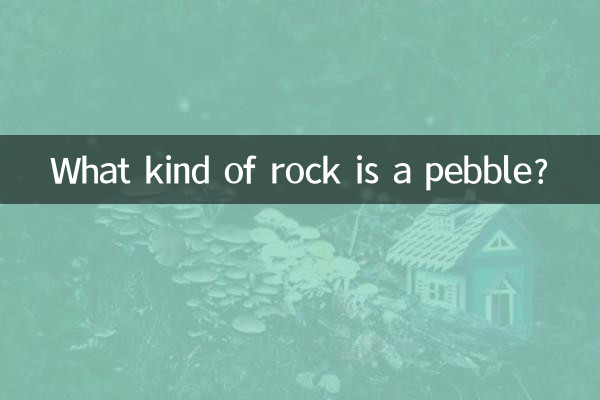What kind of rock is a pebble?
Stone is a common building material in our daily life and is widely used in road paving, construction concrete and other fields. But have you ever wondered what rocks these seemingly ordinary pebbles are made of? This article will combine the hot topics and hot content on the Internet in the past 10 days to provide you with a detailed analysis of the rock types and characteristics of stones.
1. Common rock types of stones

Stones are mainly made from the following types of broken rocks, with different hardness and uses:
| rock type | characteristic | Common uses |
|---|---|---|
| granite | High hardness, wear resistance and corrosion resistance | Road paving, building decoration |
| limestone | Soft texture and easy to process | Cement raw materials, construction fillers |
| basalt | High density and high compressive strength | Railway ballast, high-grade highway |
| sandstone | Uniform particles and strong water absorption | Garden landscaping, building blocks |
2. Popular topics on the Internet in the past 10 days and discussions related to Shizi
Recently, the topic of stones has triggered extensive discussions on social media and industry forums. The following are some hot topics:
| topic | focus of discussion | heat index |
|---|---|---|
| Environmentally Friendly Stone Alternatives | How to replace natural stone with recycled materials | ★★★★☆ |
| Stone price fluctuations | Affected by mining policies, stone prices have increased in some areas | ★★★☆☆ |
| Stone quality inspection | Application of new technology in stone hardness testing | ★★★☆☆ |
| Shizi's artistic creation | Stone collage and courtyard design have become new trends | ★★★★☆ |
3. Formation and Mining of Stone
Pebbles are particles formed after natural weathering or mechanical crushing of rocks. Its formation process mainly includes the following stages:
1.rock weathering: Long-term wind, rain, and temperature changes cause rocks to break.
2.transport and deposition: Water flows or glaciers transport broken rocks to low-lying areas for deposition.
3.artificial mining: Processing large rocks into stones through blasting, mechanical crushing, etc.
It is worth noting that environmental protection policies have become stricter in recent years, and some areas have restricted the mining of natural stones and instead promoted environmentally friendly alternatives such as recycled aggregates.
4. How to identify the quality of stones
High-quality stones should have the following characteristics:
| index | standard |
|---|---|
| hardness | Mohs hardness ≥6 (granite, basalt) |
| Particle size uniformity | More than 80% of the particles are in the range of 5-20mm |
| Mud content | ≤1% (high standard engineering requirements) |
| water absorption | ≤3% (high-quality stones) |
5. The future development trend of stones
With the advancement of science and technology and the popularization of environmental protection concepts, the stone industry is facing the following changes:
1.Green mining technology: Reduce damage to the ecological environment.
2.Recycled aggregate applications: Construction waste is recycled into recycled stones.
3.Intelligent sorting system: AI technology is used to automatically classify stone particle sizes.
In short, although the stones are small, they carry the imprint of geological changes and human civilization. In the future, with the advancement of technology, this basic building material will take on new vitality.

check the details

check the details